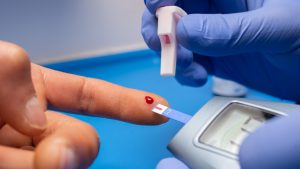The start of a new year is a perfect opportunity to reflect on achievements, learnings, and how to progress toward your goals. For those living with diabetes, this moment can be an invitation to acknowledge what has worked, make necessary adjustments, and envision a future full of well-being.
Reflect on 2024: Recognize Your Achievements
Before setting new goals, it’s important to look back and celebrate your progress. Ask yourself:
What personal health achievements stand out this year? Perhaps you maintained more stable glucose levels, adopted a regular exercise habit, or learned more about nutrition.
What strategies helped you overcome challenges? These could include leveraging technology or receiving support from loved ones.
Write down your answers and use them as a foundation to build an even more effective plan for 2025.
Set Powerful and Realistic Goals
A well-defined goal can make all the difference. Here are some examples to inspire you:
Enhance glucose management: “Increase my time in range (TIR) to 75%.”
Incorporate physical activity: “Take 30-minute walks, five times per week.”
Personalized nutrition: “Try at least two new healthy and balanced recipes per month.”
Emotional well-being: “Dedicate 10 minutes daily to mindfulness or gratitude practices.”
Use the SMART methodology to ensure your goals are:
Specific: Clear and direct—what exactly do you want to achieve?
Measurable: Define concrete indicators.
Achievable: Realistic given your context.
Relevant: Meaningful for your well-being.
Time-bound: Set reasonable deadlines.
Techniques to Create a Successful Plan
A solid plan helps you stay focused and motivated:
Break your goals into small steps: For example, if you want to increase physical activity, start with 10 minutes daily and gradually build up.
Use technological tools: Apps to monitor glucose levels or organize your meals and routines can be invaluable.
Set reminders: Small notifications on your calendar or phone can keep you on track.
Strengthen Your Support Network
The path to achieving your goals is easier with a strong support system. Share your goals with family, friends, or healthcare professionals to gain encouragement and feedback. You can also join online communities where others share similar challenges and achievements.
Celebrate Every Step Forward
Progress isn’t always linear, but every small step matters. Learn to recognize your advancements, no matter how minor they may seem, and reward yourself in healthy ways. This could be an activity you enjoy, a new gadget to assist in your self-care, or simply taking a moment for yourself.
Envision a 2025 Full of Well-Being
Close your reflection by imagining how you would like to feel at the end of 2025. Visualize your goals achieved and the positive impact they will have on your life. This exercise not only motivates but also helps you focus on what truly matters.
Remember, each year is a new opportunity to learn, grow, and live fully. 2025 can be your best year yet! 🌟

Type 2 Diabetes: Is It Really Reversible?
A recent National Geographic article [link] explores how type 2 diabetes could be reversible with the right approaches. This condition, which affects millions of people worldwide, has long been considered a chronic and progressive disease. However, recent research challenges this perception and suggests that with lifestyle changes and the right approach, remission is possible. The

How Do GLP-1 Drugs Compare? A Breakdown of Ozempic, Mounjaro, and Trulicity
GLP-1 receptor agonists have revolutionized diabetes management, with drugs like Ozempic, Mounjaro, and Trulicity leading the market. But how do these medications compare in terms of effectiveness, side effects, and patient outcomes? Let’s explore their differences and what they mean for diabetes patients. Understanding GLP-1 Medications GLP-1 receptor agonists mimic a natural hormone that helps

Why Has Medicare Spending on Diabetes Medications Skyrocketed in 5 Years?
In the past five years, Medicare spending on diabetes medications has increased nearly fivefold, reaching $35.8 billion in 2023. This surge has been primarily driven by the growing use of GLP-1 drugs such as Ozempic, Mounjaro, and Trulicity. But what is behind this cost escalation, and how does it affect patients and the U.S. healthcare

The Gut Microbiota and Blood Sugar Control: A Hidden Connection
The human gut is home to trillions of bacteria that play a crucial role in digestion, immune function, and even metabolism. Recent research has revealed a fascinating link between the gut microbiota and blood sugar regulation, shedding light on how the balance of microbes in our intestines can influence diabetes risk and overall metabolic health.

The Dawn Phenomenon: Why Blood Sugar Rises While You Sleep
For many people with diabetes, waking up with high blood sugar levels can be frustrating—especially if they didn’t eat anything overnight. This early-morning spike in blood glucose is known as the Dawn Phenomenon, and it happens due to natural hormonal changes in the body. But why does it occur, and how can it be managed?

The Influence of Red Light on Blood: Can It Improve Diabetes?
Type 2 diabetes is a metabolic disease characterized by insulin resistance and elevated blood glucose levels. In the search for complementary alternatives to improve glycemic control, red light therapy has gained attention due to its potential to enhance circulation, reduce inflammation, and optimize cellular function. But what does science say about it? ✨ What is

